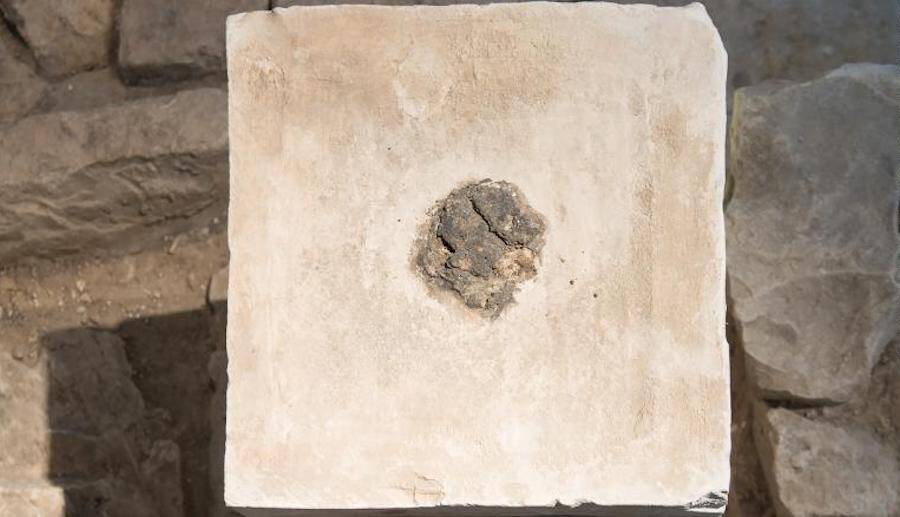“Ancient High: Archaeologists Unearth Shocking Evidence of Cannabis Rituals at 8th Century B.C. Biblical Shrine”
When we think of ancient rituals, the mind might wander to elaborate ceremonies steeped in meaning—beautiful, ornate altars adorned with offerings of incense, perhaps? Now, what if I told you the secret to making one such sacred experience ahem more aromatic involved mixing cannabis with—wait for it—animal dung? Yup, you read that right! The oldest known ritualistic cannabis burning has been unearthed at the Tel Arad shrine in Israel, revealing a fascinating blend designed to burn slowly at lower temperatures. Just imagine the scene: flasks of frankincense floating in the air but with a twist of earthy undertones courtesy of our four-legged friends! As researchers dive deep into this captivating discovery, one can’t help but ponder: Were the priestly officiants looking to find a divine connection—or just trying to mask an unpleasant aroma? Join me as we uncover the implications of this groundbreaking revelation, opening a new window into the ancient world and its intriguing practices. LEARN MORE.
The cannabis was mixed with animal dung to make it burn slowly at a lower temperature.

Israel MuseumThe shrine at Arad, as rebuilt in the Israel Museum in Jerusalem. The upper squares show the cannabis and frankincense residues.
The oldest known instance of ritualistic cannabis burning has been discovered on a limestone altar in Israel’s Tel Arad shrine. According to Science News, the cannabis was mixed with animal dung to burn at lower temperatures, while the frankincense found on another altar helped with the stench.
Excavations in the 1960s already revealed the ruins of two fortresses, ostracas (stones with inscriptions), and the shrine dedicated to Yahweh — but only modern analysis could help in identifying the residue atop each altar. These stood at the entrance of a cella, or small room containing cult objects.
Researchers believe this is where religious rites were held, and previous analysis of pottery items found at the site suggests the shrine saw regular use between 760 B.C. to 715 B.C. Published in the Journal of the Institute of Archaeology of Tel Aviv University, the study is nothing short of historic.
“This is the first time that cannabis has been identified in the Ancient Near East,” said lead author Eran Arie from the Israel Museum in Jerusalem. “Its use in the shrine must have played a central role in the cultic rituals performed there.”

Israel MuseumThe cannabis was mixed with animal dung to burn at a lower temperature, thus slower, presumably to last for the duration of the religious rite.
According to CNN, it was late archaeologist Yohanan Aharoni who initiated excavations in 1962. For the next five years, his work on behalf of the Institute of Archaeology of the Hebrew University of Jerusalem uncovered items still being investigated over half a century later.
The two fortresses dated to the ninth and sixth centuries B.C. and served to guard the Judahite kingdom’s southern border. The shrine was constructed in the 10th century B.C., not unlike the First Temple of Jerusalem — and built upon the east-west axis in a potentially ritualistic act, itself.
Located in the northwestern corner of the fortresses, the shrine is 42 feet across and 62 feet deep. It holds four distinct areas, including an open courtyard cordoned off with fences and a storage area, a main hall, and a small cella west of the main hall.
Perhaps most significant is that the shrine dates to a period when Judah was largely an assortment of rural settlements. The cella, which contained all items required in the religious rites, was considered the heart of the shrine — and thus aptly termed the “Holy of Holies.”

Public DomainThe “Holy of Holies” shrine as depicted in the 1890 Holman Bible.
It’s unclear why the shrine was buried. Its hiding could be ritualistic or perhaps to protect it from the occupying Assyrians of the time. One thing definitely seemed clear to Arie once the stairs, floor, and furniture of the shrine were moved from exhibits to galleries over the 2000s.
“This was the point I realized for the first time the real incense was really left there,” he said.
Chemical analysis of the dark residue discovered on the altars in the 1960s was either inconclusive or undisclosed until now. Arie realized around two years ago that modern techniques could shed invaluable light on the Biblical mystery. For him, the results were shocking.
“We know from all around the Ancient Near East and around the world that many cultures used hallucinogenic materials and ingredients in order to get into some kind of religious ecstasy,” he said. “We never thought about Judah taking part in these cultic practices.”
“The fact that we found cannabis in an official cult place of Judah says something new about the cult of Judah.”
The residues were identified with help from bioarcheologist Dvory Namdar of Israel’s Agricultural Research Organization in Bet-Dagan. The smaller altar was found to have been used for cannabis mixed with animal dung, while the larger one held the frankincense.


















